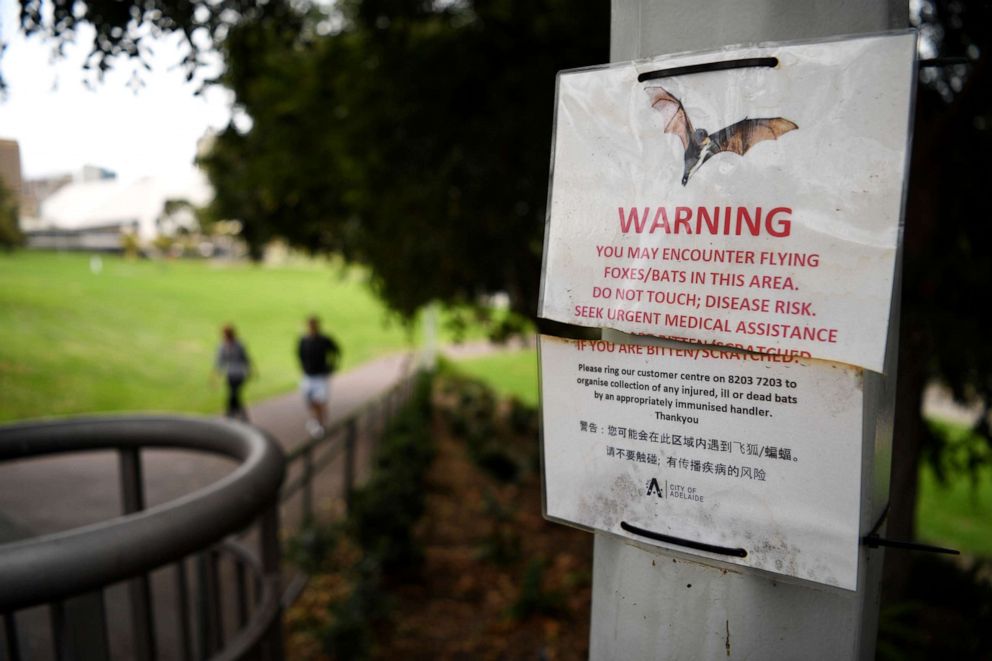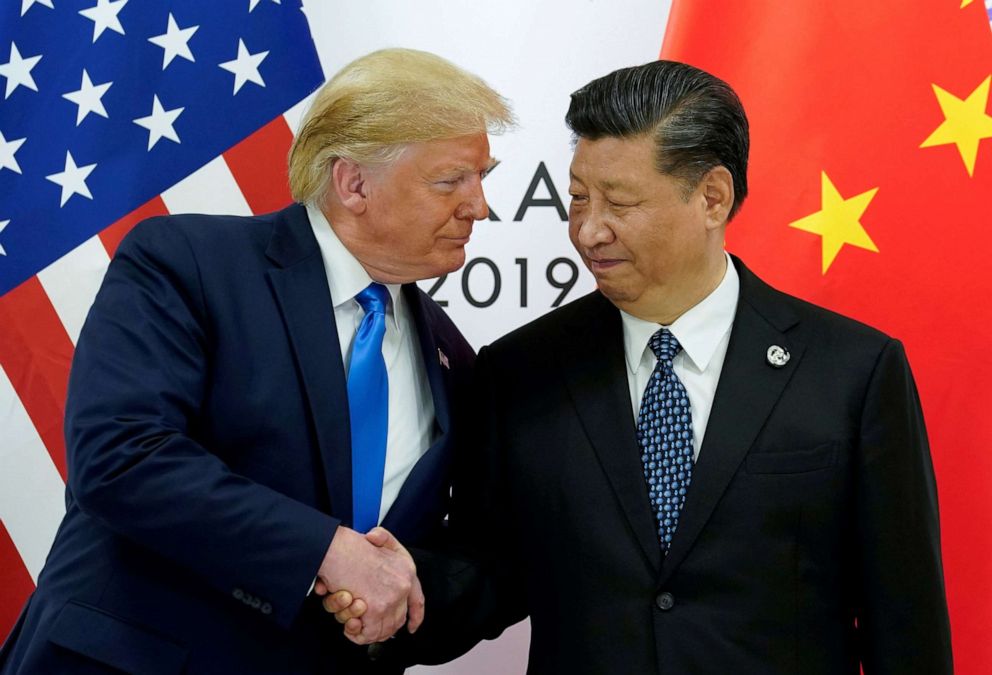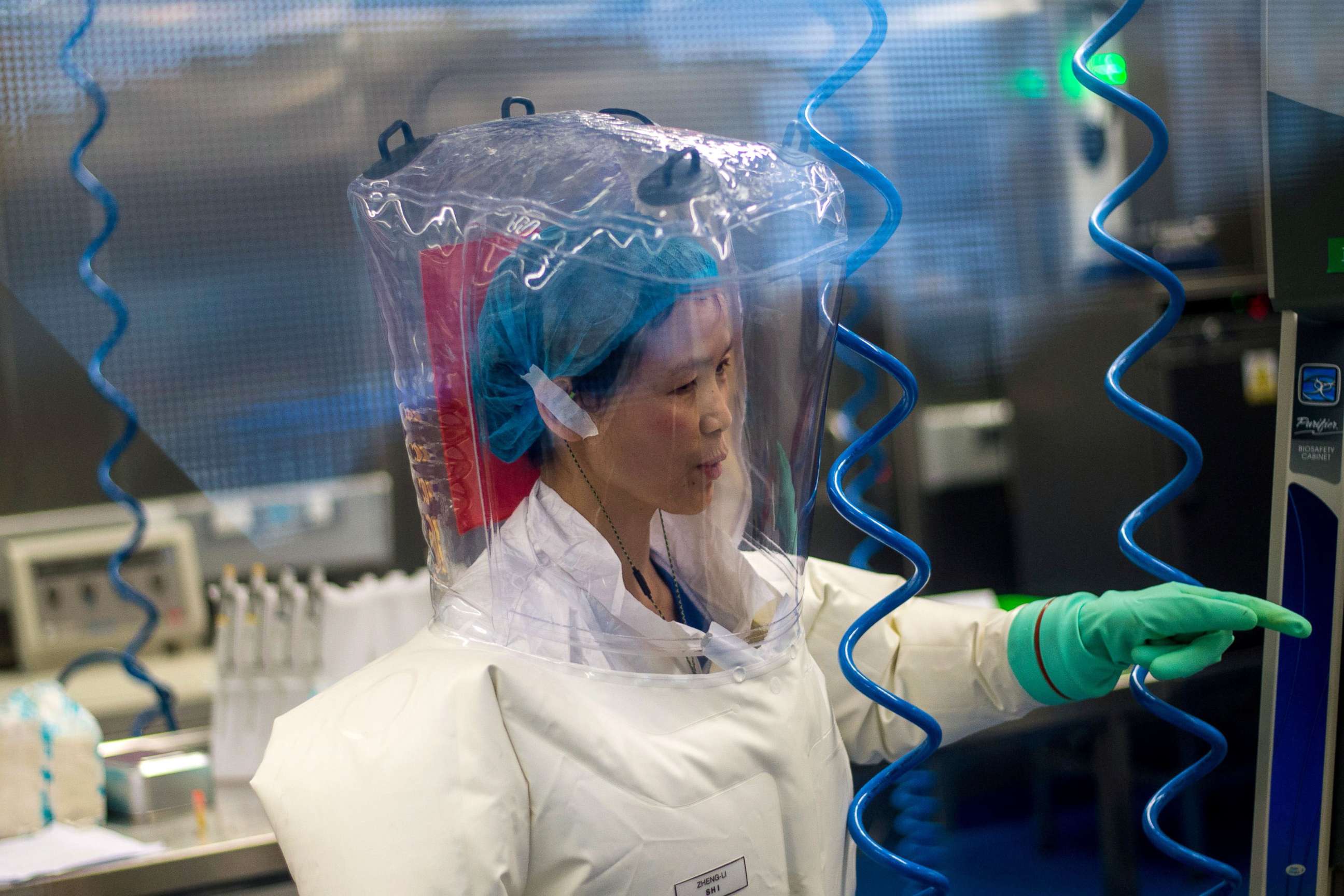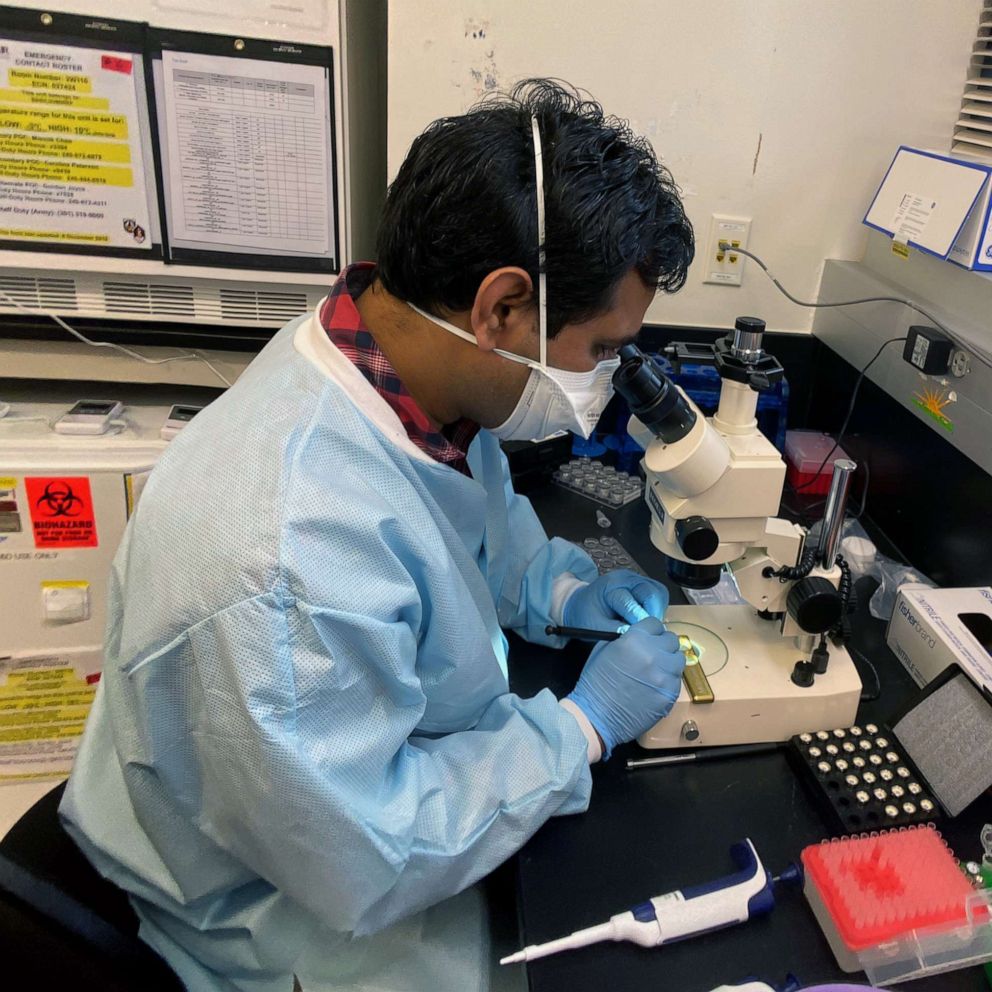Trump admin pulls NIH grant for coronavirus research over ties to Wuhan lab at heart of conspiracy theories
Despite Trump's attacks, the US group doing the research defended the Wuhan lab.
The Trump administration has pulled funding for a group of scientists studying coronaviruses in bats and the risk of their spillover into humans -- the very kind of infection that started the COVID-19 pandemic -- according to EcoHealth Alliance, the New York-based nonprofit organization conducting the research.
The cancellation of the grant after more than a decade of work in this field seems to be tied to EcoHealth Alliance's partnership with the Wuhan Institute of Virology, the biomedical lab at the heart of conspiracy theories that the Chinese government created or unleashed the virus or the unproven thesis that the outbreak started with an accident because of faulty safety standards in the lab.
Either way, the group expressed regret at the decision by the National Institutes of Health to terminate funding, saying its work has helped in "designing vaccines and drugs to protect us from COVID-19 and other coronavirus threats" and pointing out the Wuhan Institute's participation had been approved by the NIH for years, including just last year under President Donald Trump.
The president has taken a harder line on China in recent days, saying Thursday he has seen evidence that the Wuhan Institute is responsible for the outbreak, although he wasn't clear whether he believes it was somehow manufactured in the lab or the result of an accident. Most experts have told ABC News the first human infection -- what's known a "zoonotic spillover" -- is much more likely to have happened in the wild, where that kind of transmission occurs increasingly often.

"It's a terrible thing that happened," Trump told reporters at the White House Thursday evening. "Whether they made a mistake or whether it started off as a mistake and then they made another one, or did somebody do something on purpose?"
The U.S. intelligence community agrees with the scientific consensus that the virus is "not man-made or genetically modified," the Office of the Director of National Intelligence said in a rare statement Thursday, but it announced its intel agencies are investigating whether the outbreak could be "the result of an accident at a laboratory in Wuhan."
EcoHealth Alliance has worked with that lab for over a decade, according to a source familiar with the grant, as has the U.S. Agency for International Development's PREDICT project, which for over 10 years has also studied viruses in animals and prepared local partners around the world to detect that kind of "spillover."
But in a letter last Friday, the National Institutes of Health informed the EcoHealth Alliance it was terminating the grant and denying it access to the remaining $369,819 in its account for Fiscal Year 2020.
"At this time, NIH does not believe that the current project outcomes align with the program goals and agency priorities," Michael Lauer, NIH's deputy director for outside research, wrote, according to a copy obtained by Politico, which first reported the news.
Lauer's letter made no direct reference to the president, according to the source familiar with the grant, but just one week prior, Trump said he would terminate it "very quickly" and blamed the Obama administration for it, even though his administration also approved the funding.

Last Friday's termination letter came after NIH asked EcoHealth Alliance not to send any more funding to the Wuhan Institute of Virology earlier this month, according to the source. The group had halted funding, but largely because the pandemic had put a halt to nearly all its research operations.
The NIH did not respond to requests for comment. EcoHealth Alliance's spokesperson referred ABC News to the statement on its website.
"International collaboration with countries where viruses emerge is absolutely vital to our own public health and national security here in the USA. We stand by our work, and by our mission," the group's statement said in part.
EcoHealth Alliance has received NIH funding for this work since 2008, amounting to $5.96 million over 12 years, according to NIH data. That work has helped "develop predictive models of global 'hot spots' for the future emergence of bat viruses" and used its "large repository of bat biological samples to conduct targeted surveillance in these 'hot spots' for known and undiscovered bat pathogens," according to the group.
That work is now at risk, according to the source, who said U.S. access to those samples and at least some of that data held by the Wuhan Institute would be cut off.
Since Fiscal Year 2014, that work has been awarded to EcoHealth Alliance's "Understanding the Risk of Bat Coronavirus Emergence" project in particular, which is explicitly focused on China and done in partnership with the Wuhan Institute and others.

"This project aims to understand what factors increase the risk of the next CoV [coronavirus] emerging in people by studying CoV diversity in a critical zoonotic reservoir (bats), at sites of high risk for emergence (wildlife markets) in an emerging disease hotspot (China)," the group's NIH-approved research abstract said.
Scientists have determined that the novel coronavirus that causes COVID-19 originated in a bat, although there's been no conclusion yet about how it jumped from bats to humans. Many of the earliest cases were connected to a wet market in Wuhan, where live and freshly killed animals are sold, but some scientists have cast doubt on it being the original source. The Wuhan municipal government closed the market on Jan. 1 and cleaned it, potentially making the investigation more difficult.
But while U.S. intelligence agencies look for clues of a potential lab accident, epidemiological experts say it's highly unlikely the first transmission happened that way. Virus samples in labs are almost never still infectious, after being frozen in nitrogen during the collection process and then inactivated in the lab to preserve their genetic sequence.
"It's an unlikely probability because the laboratory is a controlled setting and people wear personal protective equipment. I've seen hearsay that they maybe didn't have enough or they weren't skilled enough, but there are barriers, huge barriers between people and viruses in the laboratory setting," said Dr. Christine Johnson, principal investigator with USAID's PREDICT project, which will end this September after 10 years and two six-month extensions as USAID launches a new project that applies the data PREDICT collected.
The probability of infection "is so much higher in the real world, where there are more people and more bats. It's vastly more likely than the potential for a human-bat interaction in the lab," added Johnson, a professor of epidemiology and ecosystem health at UC Davis School of Veterinary Medicine and director of its EpiCenter for Disease Dynamic.
In the face of that, Secretary of State Mike Pompeo has now started to call into the question of China's biomedical labs, demanding that they provide international inspectors access to them, although it's unclear if the administration has formally requested that of the Chinese government. Many of the scientists at the Wuhan Institute of Virology have been trained by the U.S. government's PREDICT project.
Some experts believe there was likely an intermediary animal infected by a bat that then infected a human, such as a pangolin, a scaly-skinned mammal that resembles an armadillo and is sold for meat and traditional medicine, or a civet, a slinky cat-like mammal eaten as a delicacy and believed to be the intermediary responsible for the 2003 SARS outbreak.
But it could also be from direct exposure to a bat. A 2017 report by EcoHealth Alliance's project, whose authors include Wuhan Institute scientists, was published in the research journal Virologica Sinica and warned that "some bat SARSr-CoVs [severe acute respiratory syndrome-related coronaviruses] are able to directly infect humans without intermediate host."







